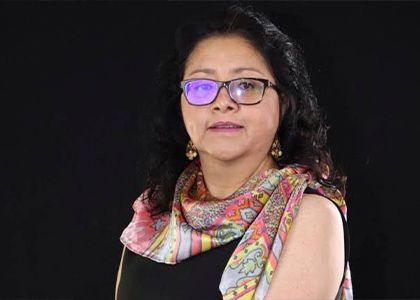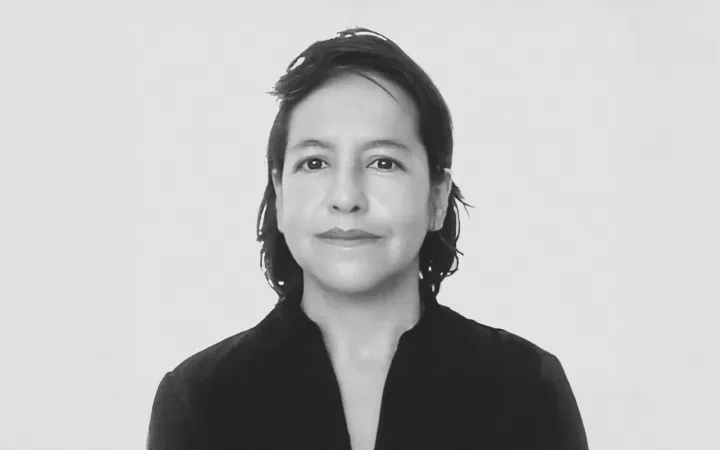
Por Nurit Martínez

Hace una semana inició la sucesión en la Rectoría de la Universidad Nacional Autónoma de México (UNAM) y la disputa se concentra entre la élite universitaria y grupos de la izquierda universitaria que hoy están vinculados con la Cuarta Transformación.
Han sido meses en los que los principales grupos universitarios: los médicos, los científicos, en menor medida los abogados, los ingenieros y la élite de la burocracia, son los que han protagonizado encuentros para cabildear y hacer de este proceso una transición que no desestabilice a la Universidad más grande de Iberoamérica, con casi 380 mil alumnos y una comunidad total que rebasa las 400 mil personas.
El grupo de los universitarios tomó la estrategia de impulsar diversas candidaturas bajo el amparo y el palomeo de los exrectores que hoy cuentan con el aprecio de la comunidad puma: los exrectores José Narro, Juan Ramón de la Fuente y José Sarukhán.
Los dos primeros médicos, ex funcionarios de los gobiernos ex priístas: José Narro y Juan Ramón de la Fuente, confrontados en algún momento habrían logrado conciliar un acuerdo para presentar una gama de candidatos surgidos del staff de Rectoría, pero con la claridad de apoyar a uno solo que les garantice la continuidad de las acciones emprendidas desde hace casi un cuarto de siglo en la institución.
A ellos, se habría sumado el actual rector y tercer médico consecutivo en la Rectoría: Enrique Graue Wiechers, quien sin el acuerdo entre los otros dos ex rectores no habría podido llegar con los apoyos suficientes ante la Junta de Gobierno para amplificar el poder de los médicos por casi 24 años.
Desde su regreso a México, tras dejar su encargo como embajador ante la Organización de las Naciones Unidas, Juan Ramón de la Fuente, ha protagonizado diversos encuentros en los que su papel no solo ha sido el de llamar a esperar los tiempos formales de la Junta de Gobierno, sino a tranquilizar los ánimos de quiénes al interior deseaban impulsar reformas para modificar las reglas de designación en la Junta de Gobierno.
Ha sido factor de cohesión entre directivos que él mismo formó durante los ocho años de su gestión y hoy son parte de la élite universitaria o del staff directivo de la Rectoría.
Al fallecimiento del ex rector Guillermo Soberón --exsecretario de Salud en dos ocasiones--, quien se había consolidado como el gran jerarca que guiaba el destino de la institución, los dos ex rectores médicos emprendieron acciones para ocupar esa posición en donde los universitarios encuentran el consejo guía ante los embates externos a la institución.
Sin embargo, antes de librar esa batalla, ambos (De la Fuente y Narro) han tenido que encontrar espacios de negociación para impedir el paso de otros grupos como el de los científicos que luego de haber apoyado al ex rector Francisco Barnés no ha podido conquistar nuevos espacios al interior de la UNAM, ello a pesar de que el ex rector José Sarukhán sigue gozando el aprecio y simpatía no sólo de los científicos sino de otros grupos de poner universitario.
Narro y De la Fuente, en medio de su propia confrontación por definir el rumbo de la UNAM, han resentido la distancia de grupos pumas que no vieron con buenos ojos que ambos formaran parte los últimos dos gobiernos federales. El primero con el priísta Enrique Peña Nieto y hoy siendo protagonista del proyecto opositor del Frente Amplio por México, el segundo al sumarse a la gestión del presidente López Obrador.
La apuesta de la clase universitaria
De entre esas fuerzas surgen las candidaturas de Leonardo Lomelí, actual secretario general y quien sería su segunda participación en un proceso hacia la Rectoría.
Compitió hace cuatro años contra el mismo Graue y ello sólo fortaleció su presencia en el segundo cargo más importante de la institución.
Es señalado en la comunidad como El Delfín del grupo de médicos, a quien un sector de la izquierda universitaria apoyaría, dado que no coincide con los señalamientos que hasta ahora ha lanzado el presidente de la República, Andrés Manuel López Obrador, en el sentido de que la UNAM se derechizó o que ahí solo habita la “burocracia dorada”, o bien, no coinciden con las políticas impulsadas en la ciencias y salud en esta administración federal.
La lista la complementan dos mujeres, en medio de un debate por la llegada de más mujeres a espacios de poder y que forman parte del staff del rector. Por un lado, Patricia Dolores Dávila que está al frente de la secretaría de Desarrollo Institucional, exdirectora de la Facultad de Estudios Superiores (FES) Iztacala y quien fue compañera de banca de la exjefa de Gobierno de la Ciudad de México, Claudia Sheinbaum.
También está Guadalupe Valencia García, coordinadora de Humanidades, cercana a la ex secretaria de Educación, Ciencia e Innovación, Rosaura Ruiz y quien hoy encabeza un grupo que apoya la precandidatura de la exjefa de Gobierno.
Ese grupo lo complementa Luis Álvarez Icaza Longoria, actual secretario administrativo y hermano del senador panista Emilio Álvarez Icaza. En él los universitarios destacan una mirada de gestión sin mayores conexiones con la investigación y la difusión cultural.
Junto a él aparece el actual director de la Facultad de Medicina, Germán Fajardo, quien en medio de la pandemia de Covid se confrontó con el gobierno de la Cuatroté cuando se determinó retirar a los estudiantes de pregrado de la primera fila de atención a los pacientes más graves.
Más tarde se puso al lado del gremio médico cuando el presidente López Obrador acusó que tenían comportamientos mercantilistas en medio de la pandemia y de la contratación de médicos cubanos con mejores salarios que los médicos residentes.
En esa lista de los que ya se han pronunciado para competir por la Rectoría está también el coordinador de la Investigación Científica, William Lee Alardín, el único representante del grupo de científicos y a quien se le ha puesto en entredicho por no haber planteado una postura más dura frente a las decisiones del ex Consejo Nacional de Ciencia y Tecnología.
En ese escenario, cuestionan que no haya liderado un frente contra la cancelación de los fideicomisos para la ciencia, las denuncias y demandas no comprobadas por desvío de recursos en contra de destacados universitarios y la cancelación de becas para la formación de científicos en proyectos que no fueron marcados por la Cuatroté como prioritarios, entre otros.
Los grupos que buscan el poder y hoy estarían en alianza para hacer frente a la izquierda universitaria afín a la Cuatroté los complementan los de profesionistas como los abogados, ingenieros, arquitectos y de ciencias sociales como politólogos ven disminuido su poder por la larga estadía de los médicos, sin embargo, se han sabido colocar dentro de la administración central o desde sus escuelas y facultades tomaron una voz importante en momentos polémicos.
Tal es el caso de lo ocurrido en el vergonzoso caso de plagio de la tesis de la ministra Yasmín Esquivel Mossa. Ahí el director de la Facultad de Derecho, Raúl Contreras, se colocó en el foco por la determinación que sigue pendiente en ese caso. Pero en lo que hace a su gestión ha sabido ubicar a esa dependencia en el centro de distintos temas como la violencia contra las mujeres.
La fuerza política formada en el CEU
Frente a todos ellos está el grupo de exdirigentes estudiantiles del CEU que se han reagrupado y movilizado para recordar la agenda pendiente que impulsaron a finales de los años 80, cuando se opusieron con una huelga y marchas multitudinarias en la Ciudad de México para frenar una reforma impulsada por el entonces rector Jorge Carpizo, que proponía aumentar las cuotas y desaparecer el pase automático de las preparatorias a la licenciatura.
Esos líderes universitarios que promovieron movilizaciones, bloqueos y la huelga entre 1986-1987 y que más tarde se integró al grupo político de 1988 que creó al PRD y ahora están al lado de la precandidatura de Claudia Sheinbaum en Morena es el que buscar colocar o hacer alianzas con esos grupos universitarios.
Uno de esos grupos está encabezado por Rosaura Ruiz, quien está impedida por edad para volver a participar en el proceso de sucesión en la Rectoría, pero que a su regreso a la UNAM se advierte como el canal mediante el cual su destacada alumna Claudia Sheinbaum puede trazar los apoyos para que los exceuístas puedan seguir en la conquista de espacios políticos.
Algunos de ellos estarían buscando acuerdos para fortalecer la candidatura del secretario general, Leonardo Lomelí, otros más con las dos candidaturas de mujeres para hacer posible la designación de la primera rectora de la UNAM y conseguir un diálogo menos ríspido con quien pudiera llegar a la Presidencia de la República en 2024, dado que en el escenario se prevé que dos mujeres serán las que compitan por ese encargo.
En tanto, otro bloque más de la izquierda universitaria se agrupó en torno al actual director general de Evaluación Institucional y también exceuísta Imanol Ordorika y quien hasta hace unos años tenía lazos familiares con Sheinbaum Pardo.
El impacto institucional
A través de él se han lanzado fuertes críticas sobre las reformas pendientes en la UNAM para lo que llaman “democratizar” la elección del rector, proceso que conduce la Junta de Gobierno.
La disputa por controlar la UNAM no sólo es por los más de 52 mil 728 millones de pesos en el presupuesto anual que crece año con año, ni por una comunidad de poco más de 400 mil personas que están vinculadas directamente a la institución.
Está relacionada con la historia, la masa crítica y las aportaciones al conocimiento y las propuestas para resolver los problemas nacionales, porque concentra la mayor proporción de infraestructura científica y humana, así como el resguardo cultural más importante de México.
Ese trabajo relacionado con aspectos diversos de la vida nacional acumula múltiples reconocimientos como el que ha hecho que México aparezca en la lista de los Nobel en el mundo: Octavio Paz, Arturo García Robles, Mario Molina y el Panel Intergubernamental de Cambio Climático, además de otros cientos de reconocimientos mundiales en los últimos años a la UNAM, como el ser la mejor institución del continente.
Desde que la UNAM obtuvo su autonomía en 1929 es la Junta de Gobierno, integrada por 15 destacados universitarios y designados por el Consejo Universitario, la encargada de elegir al rector cada cuatro años, además de designar a otras autoridades universitarias como directores de escuelas, centros o facultades.
Desde hace una semana se abrió la convocatoria para recibir los nombres de quienes tienen interés personal o los que a consideración de los grupos universitarios cubre los requisitos y el perfil para ocupar la Rectoría para el periodo 2023-2027.
La Junta recibirá hasta el 3 de noviembre opiniones solo de aquellos que mantengan una relación con la Universidad. Esto abre la posibilidad de que los exalumnos se pronuncien si especifican eso, por ejemplo: que un integrante del gabinete, empresarios, legisladores y hasta el presidente López Obrador lo haga como exalumno de la Facultad de Ciencias Políticas y Sociales.
Los universitarios han llamado desde 1929 a que estos sectores no se pronuncien en respeto a la autonomía. El rector Graue lo recordó una vez más la semana pasada al convocar a los universitarios a impedir injerencias externas.
La Junta estableció en la convocatoria que los pronunciamientos no pueden ser anónimos, los que se hagan a favor o en contra deben ser en persona, mediante cita o se realicen por medio de una carta con plena identificación.
Los miembros de la Junta son Juan Alberto Adam Siade, Ana Rosa Barahona Echeverría, Enrique Cabrero Mendoza, Gerardo Jorge Cadena Roa, Elena Centeno García, Patricia Elena Clark Peralta, Luis Armando Díaz-Infante Chapa, Marcia Hiriart Urdanivia, Rocío Jáuregui Renaud, Rafael Lira Saade, Margarita Beatriz Luna Ramos, Alberto Ken Oyama Nakagawa, Vicente Quirarte Castañeda, María de la Luz Jimena de Teresa de Oteyza y la presidenta en turno es Gina Zabludovsky Kuper, encargada de conducir el proceso hasta la toma de posesión de la persona que ocupe el cargo para el periodo 2023-2027.
Desde ahora y hasta el 3 de noviembre la Junta formará comisiones para escuchar presencialmente la opinión de la comunidad.
Mientras los aspirantes deben registrarse con un currículum que detalle su trayectoria y presentar un proyecto de trabajo a más tardar el 4 de septiembre.
El 12 de octubre ese grupo dará a conocer los nombres de quienes califican como aspirantes formales y los invita a una entrevista a partir del 23 de octubre.
Al concluir iniciarán la deliberación para nombrar a quien dirigirá los destinos de la institución hasta 2027.
En medio de la definición de las fuerzas políticas para determinar a los candidatos a la presidencia de la República la disputa por el poder en la UNAM puede ser aprovechado como escenario ideal para dirimir momentos claves de la contienda nacional, que no sería nuevo, pero que no conviene a nadie.
Si la alianza universitaria se sigue tejiendo en defensa de la institución, muestra su fortaleza y unidad, la universidad librará este momento con cierta estabilidad, el reto sigue siendo qué proyecto ofrecerá a la comunidad para hacer frente a temas pendientes no solo en la designación de autoridades y mayor participación en todo el proceso.
En medio hay una amplia agenda por resolver en materia de financiamiento para enfrentar la gratuidad y obligatoriedad de la educación superior, el cambio a las políticas de ciencia y becas en el posgrado, las violencias a las mujeres, la inseguridad y el narcomenudeo, entre otros. Más allá de salvaguardar la autonomía y al territorio, ahí, en el detalle del proyecto estará la decisión de los 15 notables.
Las opiniones expresadas son responsabilidad de sus autoras y son absolutamente independientes a la postura y línea editorial de Opinión 51.
Más de 150 opiniones a través de 100 columnistas te esperan por menos de un libro al mes.






Comments ()